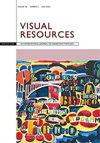Public Dissentiment: Hacktivism in the Age of High-Frequency Traders
IF 0.1
0 ART
引用次数: 2
Abstract
Public Dissentiment (2016), an artwork by this author, is an artistic research project and an online tool that helps protestors negatively impact the price of a publicly traded stock by applying the same sentiment analysis tools used by stock trading algorithms. In contemporary stock markets, high frequency trading bots that continuously buy and sell stocks, increasingly perform the role of market makers. These bots provide the market with liquidity by usually being ready to take the buy or sell end of a stock trade. However, these algorithms are also reading news stories and social media posts at lightning speed, and when they detect uncertainty they will pull out of the market causing a stock, or group of stocks, to drop rapidly in value. This text examines the technical and legal aspects of the contemporary networked stock exchange system that make Public Dissentiment’s intervention possible and provides a context for these factors through an analysis of how they produced a space for artistic intervention. Locating this work in the frames of hacktivism, tactical media, and other historical precedents for both network and financial interventions further contextualizes this project. Public Dissentiment falls into the category of mass action hacktivism, which is closely associated with tactical media and culture jamming, and typically includes a performative element. The application is a prototype for how protestors can leverage technology in the age of networks.公众异议:高频交易者时代的黑客主义
公众不满情绪(2016)是本作者的一件艺术品,是一个艺术研究项目,也是一个在线工具,通过应用与股票交易算法相同的情绪分析工具,帮助抗议者对公开交易股票的价格产生负面影响。在当代股市中,不断买卖股票的高频交易机器人越来越多地扮演着做市商的角色。这些机器人通常通过准备买入或卖出股票交易来为市场提供流动性。然而,这些算法也以闪电般的速度阅读新闻报道和社交媒体帖子,当它们发现不确定性时,它们将退出市场,导致一只股票或一组股票的价值迅速下跌。本文考察了当代网络证券交易系统的技术和法律方面,这些方面使公众不满的干预成为可能,并通过分析它们如何产生艺术干预的空间,为这些因素提供了背景。将这项工作置于黑客行动主义、战术媒体和其他网络和金融干预的历史先例的框架中,进一步使该项目具有背景意义。公众不满情绪属于大众行动黑客行动主义的范畴,它与战术媒体和文化干扰密切相关,通常包含表演元素。该应用程序是抗议者如何在网络时代利用技术的原型。
本文章由计算机程序翻译,如有差异,请以英文原文为准。
求助全文
约1分钟内获得全文
求助全文

 求助内容:
求助内容: 应助结果提醒方式:
应助结果提醒方式:


